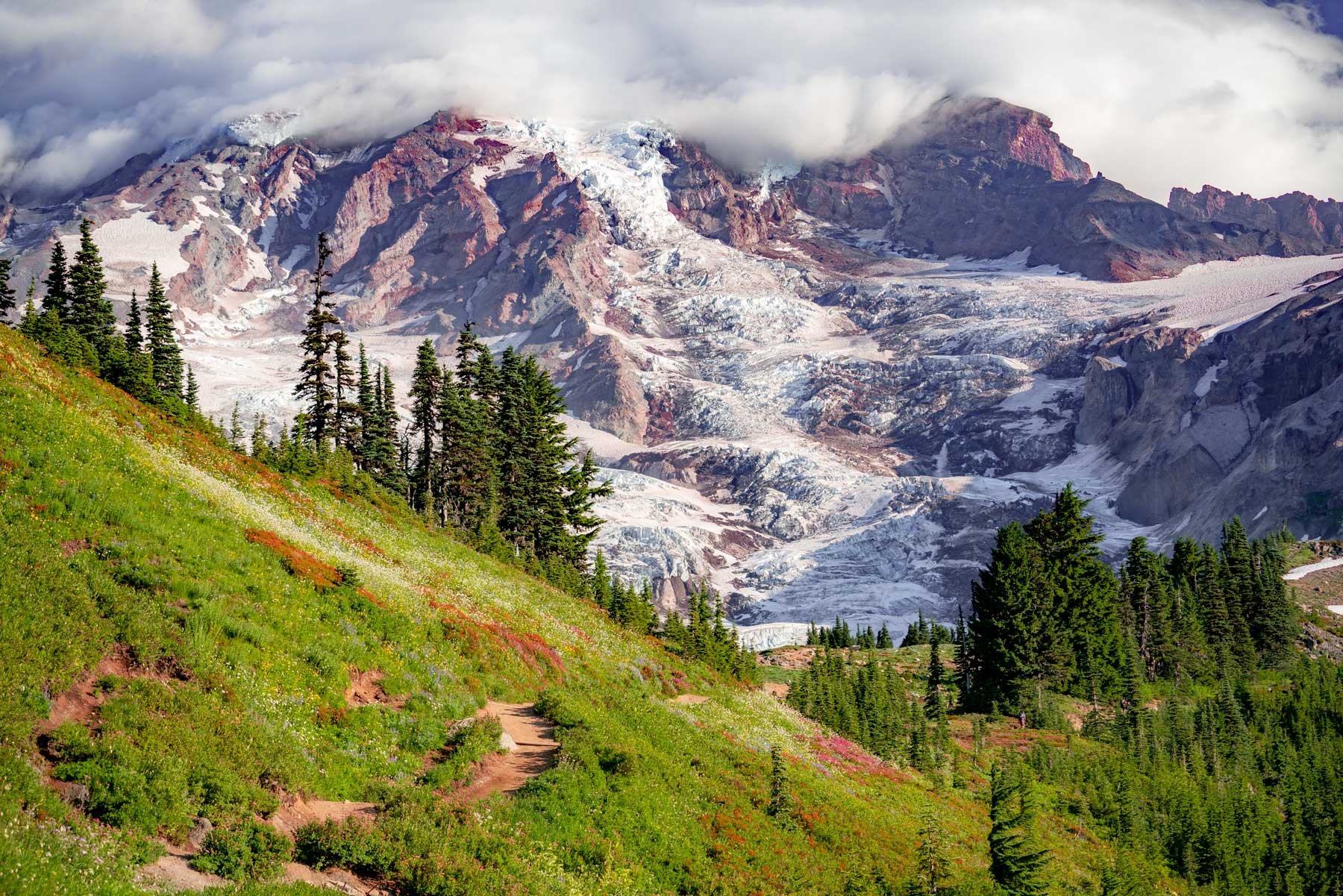
Article Summary: Mount Rainier National Park Facts
Mount Rainier National Park Facts! In this article, More Than Just Parks provides you with 10 amazing facts about one of America’s most magnificent national parks.
More Than Just Parks is your one-stop-shop when it comes to learning everything you’ll need to know about America’s national parks. We’ve got expert guides, beautiful photos, helpful tips, breathtaking films and so much more.
I’ve been to so many of these amazing places since retiring from teaching in 2018. Did I mention that I taught history? I spent a lifetime teaching about the history behind some of these natural wonders. Then I got to see them firsthand. And now I’m sharing some of the incredible stories about these beautiful places with you. It doesn’t get any better than that!
More Than Just Parks takes a deeper dive with its national park facts. We’ve done our homework so that you’ll get more than you bargained for.
Without further ado, let’s dive in.
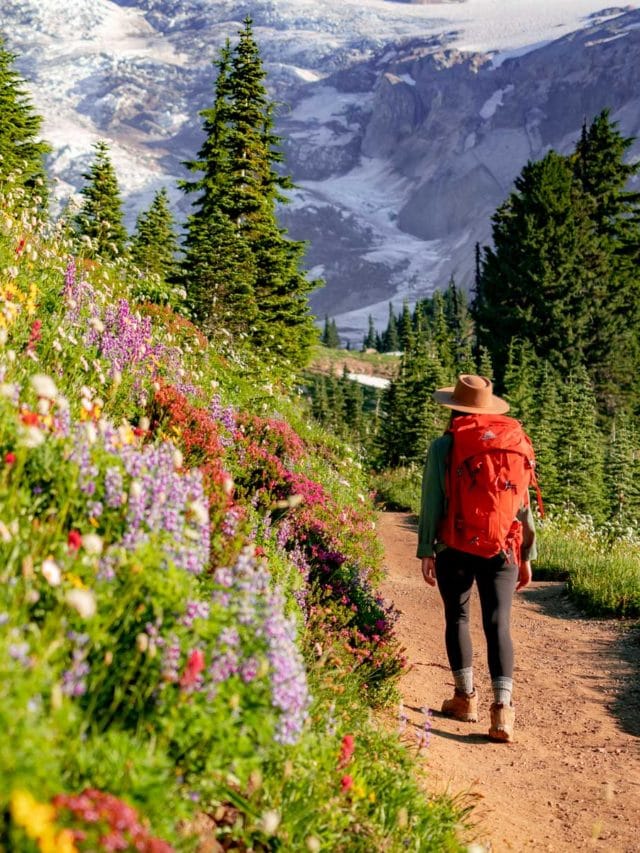
Table Of Contents: Mount Rainier National Park Facts
Mount Rainier National Park Quick Facts
- Mt Rainier Height: 14,411 feet
- First Ascent of Mt Rainier: August 17, 1870
- Mt Rainier Last Eruption: 1894
- Mt Rainier Mountain Range: Cascades Mountains
- Mt. Rainier Native Name: Tahoma
- Mt Rainier Closest Major City: Seattle, Washington
- Mt Rainier Type of Volcano: Stratovolcano
- Number of Major Glaciers on Mt Rainier: 25
- Mt Rainier is the tallest mountain in the state of Washington
- Mt Rainier is the most heavily glaciated peak in the contiguous US
- Mt Rainier is the highest peak in the Cascade Range
Top 5 Mount Rainier National Park Fact
1. Native American Tribes Explored The Park For Centuries
We begin our amazing list of Mount Rainier National Park Facts with archaeological evidence suggesting Mount Rainier has been used for the past 9,000 years. Multiple Native American tribes explored the river valleys, meadows, and forests to hunt, gather berries and look for medicinal plants long before Mount Rainier became a national park.
The Nisqually, Puyallup, Squaxin Island, Muckleshoot, Yakama and Cowlitz tribes continue to frequent the park. In recognition of their unique heritage and special relationship with Mount Rainier, park authorities have reserved special areas for Native American rituals and worship.
This process allows current generations to feel a special connection with their ancestors. Today, they continue to learn about the history of this place through its spiritual and cultural resources.
For the current generation, linking today’s tribal members to their ancestors, who lived in the shadow of the mountain for millennia, is a part of teaching them who they are and why their history matters.
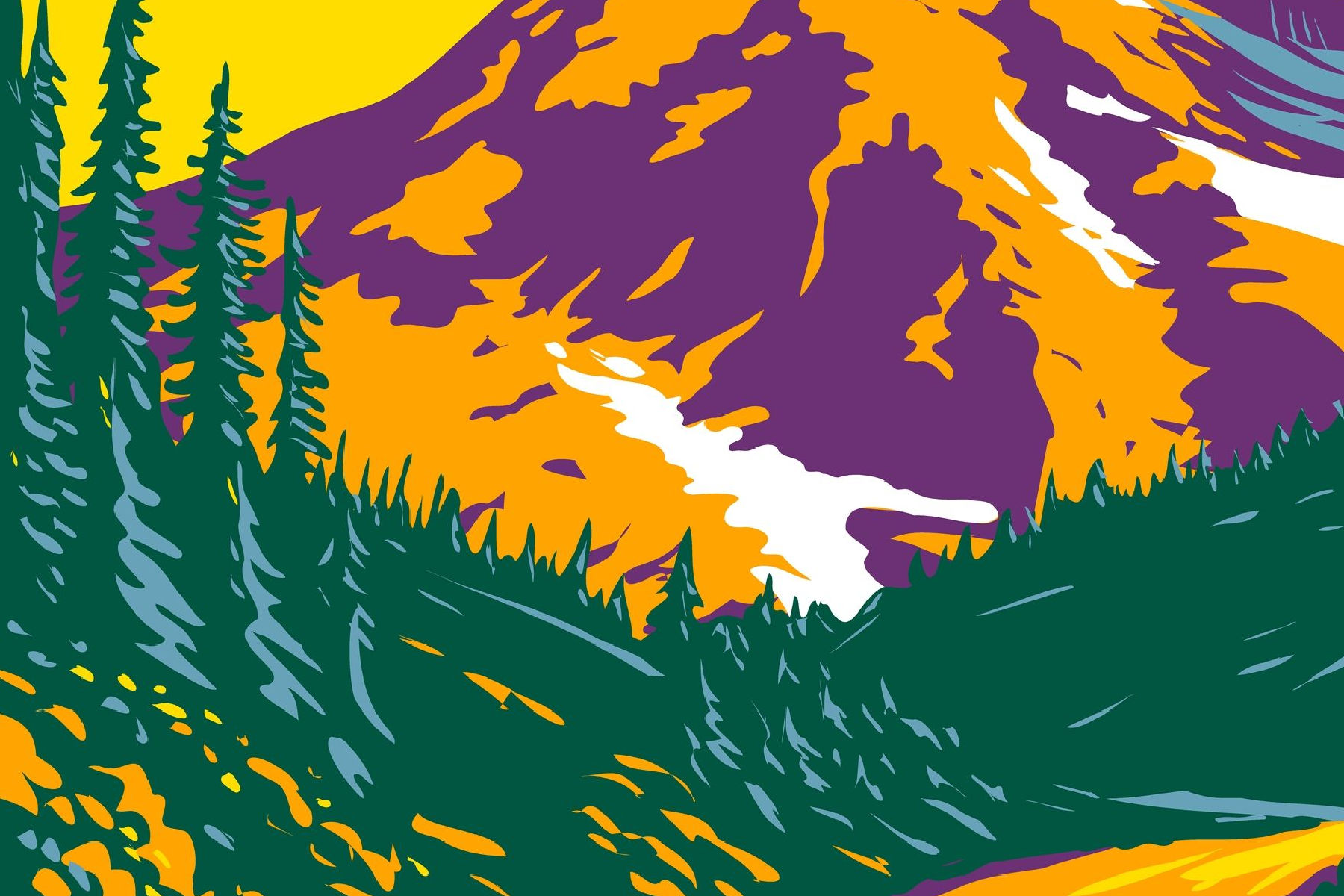
2. A British Navy Captain Gave Mount Rainier Its Name
Another of the fascinating Mount Rainier National Park Facts is that, according to the historical records, Spanish explorers would have been the first to see Mount Rainier. We know they entered the Puget Sound in 1790 and likely saw this magnificent mountain from a distance.
What they failed to appreciate, given their long-distance, was the special qualities which made it a place millions would visit annually by the twenty-first century.
For Captain George Vancouver of the Royal Navy, this place was unlike any other he had seen. Vancouver, following the Spanish by two years in 1792, entered the Puget Sound. Unlike his predecessors, however, he remained to explore and map the area.

(Courtesy of Wikimedia) | Mount Rainier National Park Facts
Vancouver Named Rainier After His Friend
Vancouver named not only the waterways and their immediate shores, but several of the mountains as well. Mount Rainier was named after his friend Admiral Peter Rainier.
Mounts Baker and Hood were also named after British admirals.
If you’re wondering, the cities of Vancouver in British Columbia and in the state of Washington are named after George Vancouver.
His expedition, which lasted from 1791-95, explored and charted North America’s northwestern Pacific Coast regions.
To learn more about this amazing explorer, I recommend: Captain George Vancouver in Alaska and the North Pacific by James K. Barnett.

“The weather was serene and pleasant, and the country continued exhibit, between us and the shores of the snowy range, the same luxuriant appearance.
–Mount Rainier National Park Nature Notes
At its northern extremity Mount Baker bore by compass N. 22 E.; the round snowy mountain, now forming its southern extremity and which, after my friend Rear Admiral Rainier, I distinguished by the name of Mount Rainier, bore N.(S) 42 E.”
CHECK OUT: 25 BUCKET LIST FAMOUS U.S. LANDMARKS (MUST-SEE)
3. Climbing Mount Rainier Can Be A Challenging Adventure
One of my favorite Mount Rainier National Park Facts has to do with the dangers associated with ascending the mountain.
Rising to 14,408 feet, Mount Rainier is the fourth highest mountain in the contiguous United States. It is approximately 11,000 feet above its immediate base. It covers 100 square miles, which is one-fourth of the area of the park.
Climbing Mount Rainier is not for the faint-of-heart. Each year, thousands attempt to reach the top which rises to almost three miles high. It’s sometimes called “the mountain that was God.”
According to data compiled by the National Park Service, as of 2022, more than 400 people had died in Mount Rainier National Park since government records were first kept.
About 25% of those deaths occurred while climbing on the mountain, which is an active volcano.
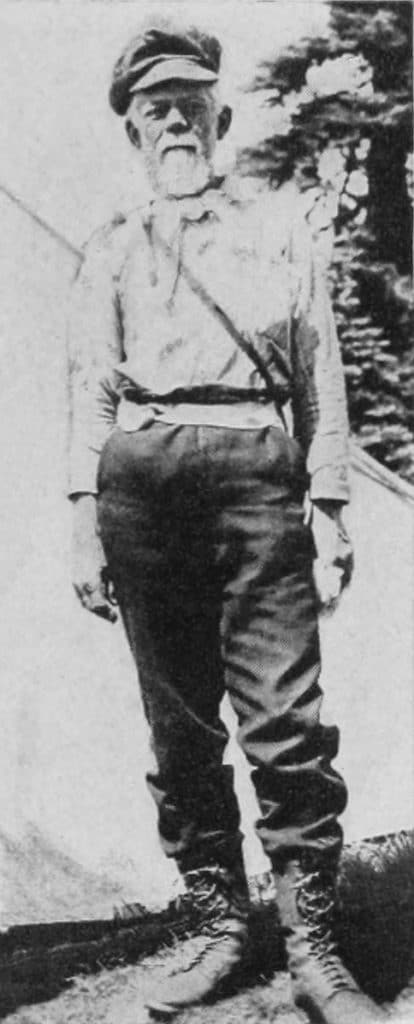
4. The First Successful Ascent Of Mount Rainier
Another amazing Mount Rainier National Park Fact has to do with the first successful ascent of the mountain.
According to the U.S. Geological Survey, the first successful ascent of Mount Rainier was made by General Hazard Stevens and P. B. Van Trump in August, 1870.

Stevens had quite a life. He’s also notable for serving in the Massachusetts state legislature, receiving the Congressional Medal of Honor for the capture of Fort Huger, Virginia in the American Civil War, and representing American interests against the British in settling San Juan Islands boundary dispute.
Stevens published a fascinating account of his climb in the Atlantic Monthly, Vol. XXXVIII, 1876. It’s definitely worth reading.
Their ascent was made on the south side of the mountain, by the way of what are now known as Paradise Park and Gibraltar, which is the route followed in recent years by many tourists.
After spending a night in the crater at the summit, they made the descent by the same route.
CHECK OUT: 15 AMAZING Facts About Grand Teton National Park
5. The Park Features Over 250 Miles Of Hiking Trails
If you love hiking then this next Mount Rainier National Park Fact is for you.
Mount Rainier’s trails connect hikers with nature. The park includes a hugely complex ecosystem producing diverse beauty and vegetation.
The 93- mile long Wonderland Trail was used over 100 years ago by patrol officers and firefighters and was the first trail in the park that fully encircled Mount Rainier.
It’s one of many trail options. The park offers over 260 miles of maintained trails for your enjoyment with some ranging from a few miles to over 20 miles.
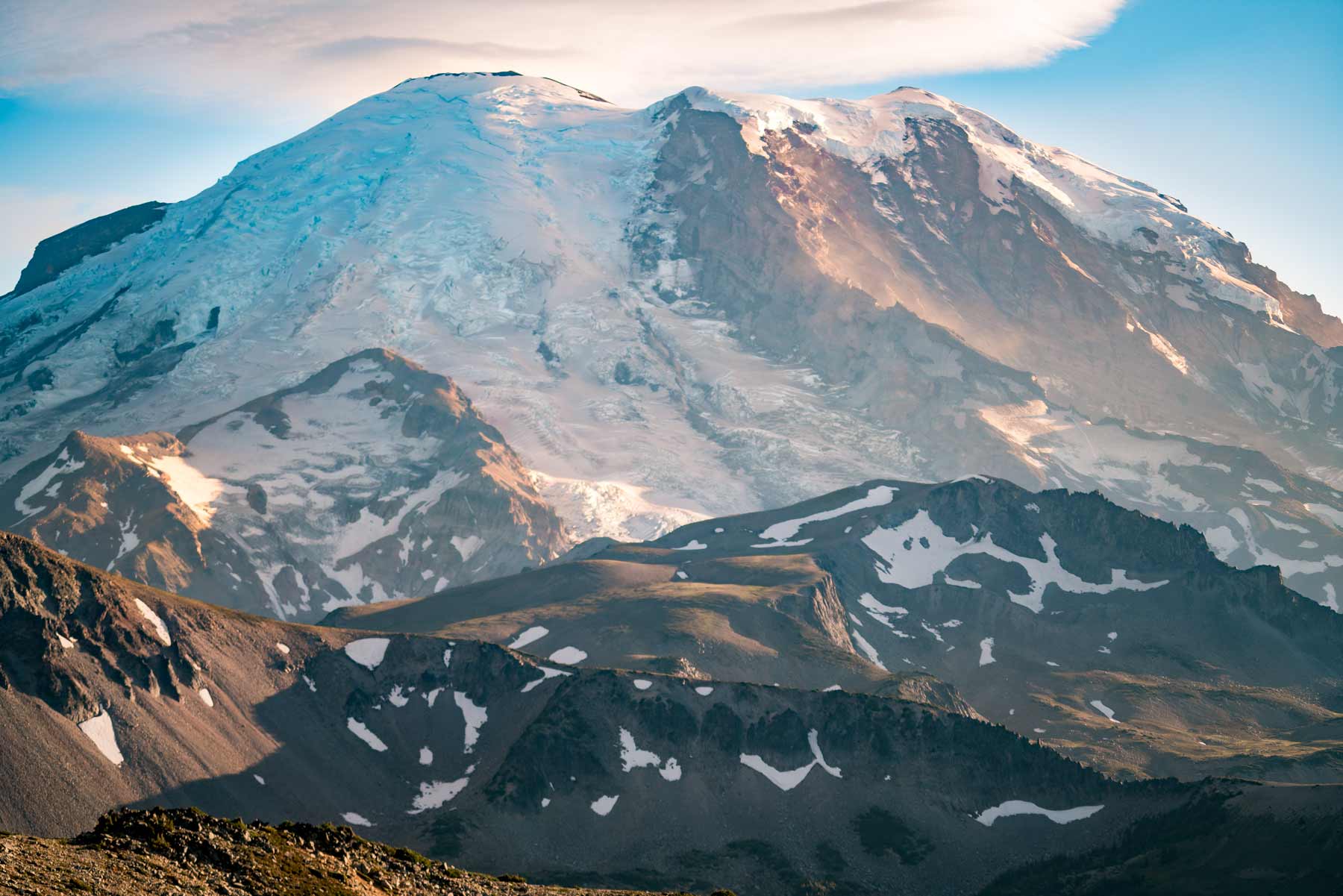
Top 10 Mount Rainier National Park Facts
6. There Are 25 Glaciers On Mount Rainier
If you enjoy glaciers then this next Mount Rainier National Park Fact is for you.
If you want to see some magnificent glaciers then Mount Rainier is the place to go. The park has at least 25 glaciers (named) and several other un-named snowfields.
Some of the glacies that are definitely worth seeing include the Carbon, CoWiltz-Ingraham, Emmons, Kautz, Nisqually, Paradise-Stevens and Winthrop.
One of the wonderful things about this park is that it’s easy to travel to a location with a great view of some of the largest glaciers you’ll ever find on the North American continent.

“The Emmons Glacier has the largest area (4.3 square miles) and the Carbon Glacier has the lowest terminus altitude (3,600 feet) of all glaciers in the contiguous 48 states.”
-National Park Service
CHECK OUT: 15 AMAZING Facts About Glacier National Park
7. An Air Force Lieutenant Landed A Plane On The Summit
Now here’s the strangest of the Mount Rainier National Park Facts.
Mount Rainier’s summit is over 14,000 feet so it’s easy to understand why someone wouldn’t want to climb it. How about taking an airplane instead?
That’s what John W. Hodgkin, an Air Force lieutenant, did on April 12, 1951. Hodgkin equipped his plane with skis and landed it on the summit of Mount Rainier at 14,410 feet.
At the time, this was a world record for a high-altitude landing.
And his story gets even more interesting. Hodgkin tried taking off again, but his plane wouldn’t start!
He was stranded near the top of the more than 14,000-feet-high peak. Hodgkin ended up spending the night in his plane in below-zero temperatures. Talk about a chill!
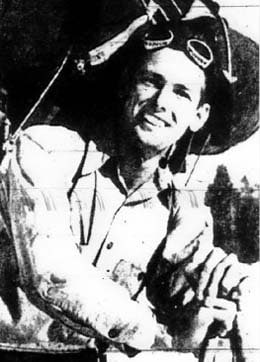
Why Wait To Be Rescued
A rescue team consisting of park rangers and mountaineers was sent to retrieve the intrepid lieutenant. Hodgkin, however, decided to take matters into his own hands.
The next morning, before the team arrived, he had pushed his airplane down the snow-covered face of the Nisqually Glacier.
“At about 3:45 p.m., Hodgkin, unaware the rescue party was approaching, unfastened the tie-down ropes, turned his plane around and started it sliding towards the steep face of Nisqually Glacier.
-HistoryLink.org Essay 8469, by Daryl C. McClary
As the Cub gained momentum, he jumped into the cockpit and strong updrafts enabled him to glide off the mountain top. Once airborne, Hodgkin dived the aircraft 5,000 feet, hoping to restart the engine, but it wouldn’t catch.
He made a dead-stick landing on frozen Mowich Lake (4,929 feet) two-thirds the way down the mountain in the northwest corner of Mount Rainier National Park.”
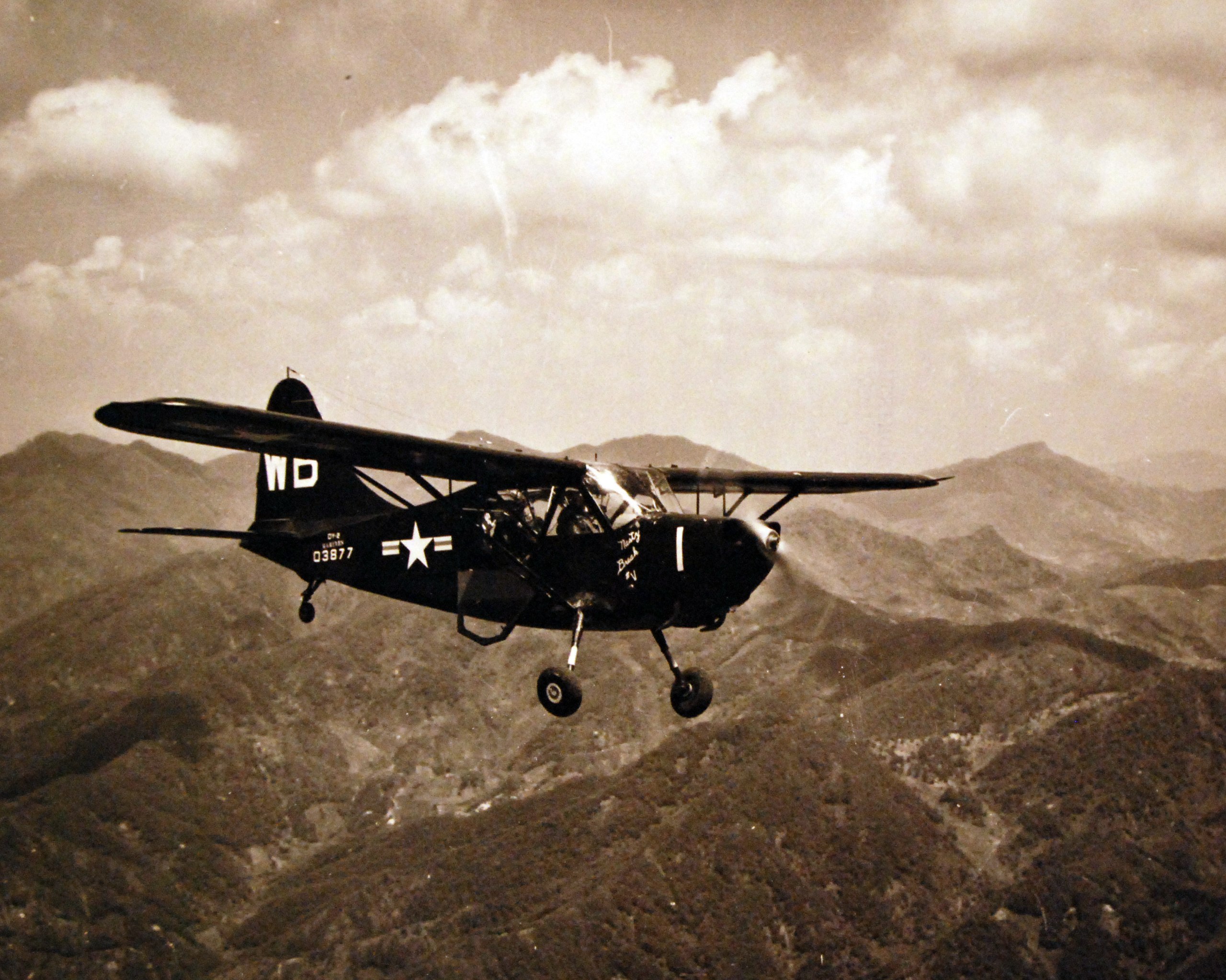
It was not a jet aircraft (Courtesy of Wikimedia Commons) | Mount Rainier National Park Facts
Flying from Mowich Lake
Hodgkin and his plane ended up on the frozen Mowich Lake and, amazingly, landed safely on the ice there.
With the help of a National Park Service ranger and twenty gallons of gasoline, dropped from an Air Force rescue plane, Hodgkin took off again and return safely to Spanaway.
What did he receive for his incredible achievement? Well, he was charged in federal court with landing a private aircraft in a national park without permission.
He received a $350 fine. Not to mention a six month jail sentence which was commuted. You can file this story under the heading of “Don’t Try This One Yourself!”

8. Walt Disney Honeymooned At Mount Rainier
Just when you thought that we couldn’t come up with any more surprising Mount Rainier National Park Facts we surprise you – again.
One of Mount Rainier’s most famous visitors would arrive in July of 1925. He was none other than Walt Disney.
After their marriage, Walt and Lillian Disney came to the national park for their honeymoon. They took in the sights, but couldn’t stay too long as Walt had to be in Seattle the next day to have a tooth extracted.
Now here’s a fun fact about the creator of Mickey Mouse. When you ask most folks who was Disney’s most famous creation they will tell you that it was the famed mouse named Mickey.
If you ask them to name Disney’s first big creation they’ll likely give you the same answer. And, they would be wrong.
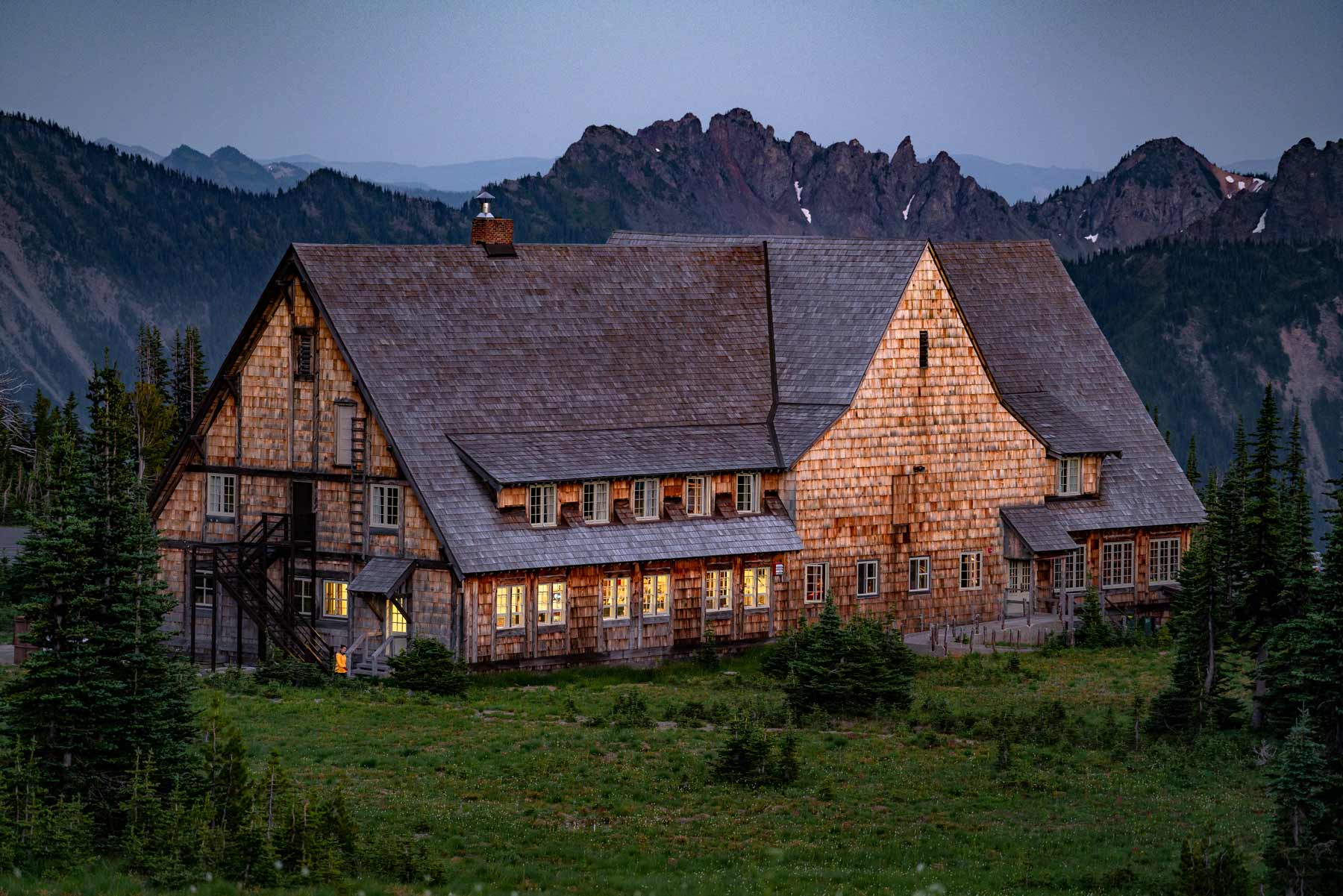
Oswald The Lucky Rabbit
No one will argue that Mickey Mouse was Walt Disney’s most famous creation.
His first big creation, however, was actually named Oswald the Lucky Rabbit. Believe it or not, Oswald was a huge hit.
With this success under his belt, in 1928, Disney went to New York to renegotiate his contract with producer Charles Mintz.
It turned out that Mintz was a cheapskate however. He wanted to give Disney not more money, but less. And, to add insult to injury, he tried to steal Walt’s talented animators right out from under him.

He Left New York Feeling Like He Had Lost Everything
At the time, Walt was working for Universal. They ended up with the rights to Oswald. Walt Disney left New York feeling like he had lost everything.
Fortunately for him and for millions of children around the world, on his train trip back to California, Walt sketched a new character who he believed could eclipse Oswald in popularity.
You guessed it! It was Mickey Mouse. So, perhaps Oswald wasn’t the lucky rabbit after all, but Mickey was most certainly the lucky mouse!

9. Mount Rainier Contains Over 65 Animal Species
At Mount Rainier, you will encounter a variety of habitats and life zones. At each of these zones, you will see different species including mammals, birds, amphibians and reptiles.
Specifically, there are 65 mammal species, 14 species of amphibians, 5 species of reptiles, 182 species of birds, and 14 species of native fish.
Among the most popular of the animal species are Columbian black-tailed deer, Douglas squirrels, Stellar’s jays and ravens.
You can also find black bear, elk, and mountain goats.
Summer is an excellent time to watch the wildlife though you can find them during all four seasons of the year.
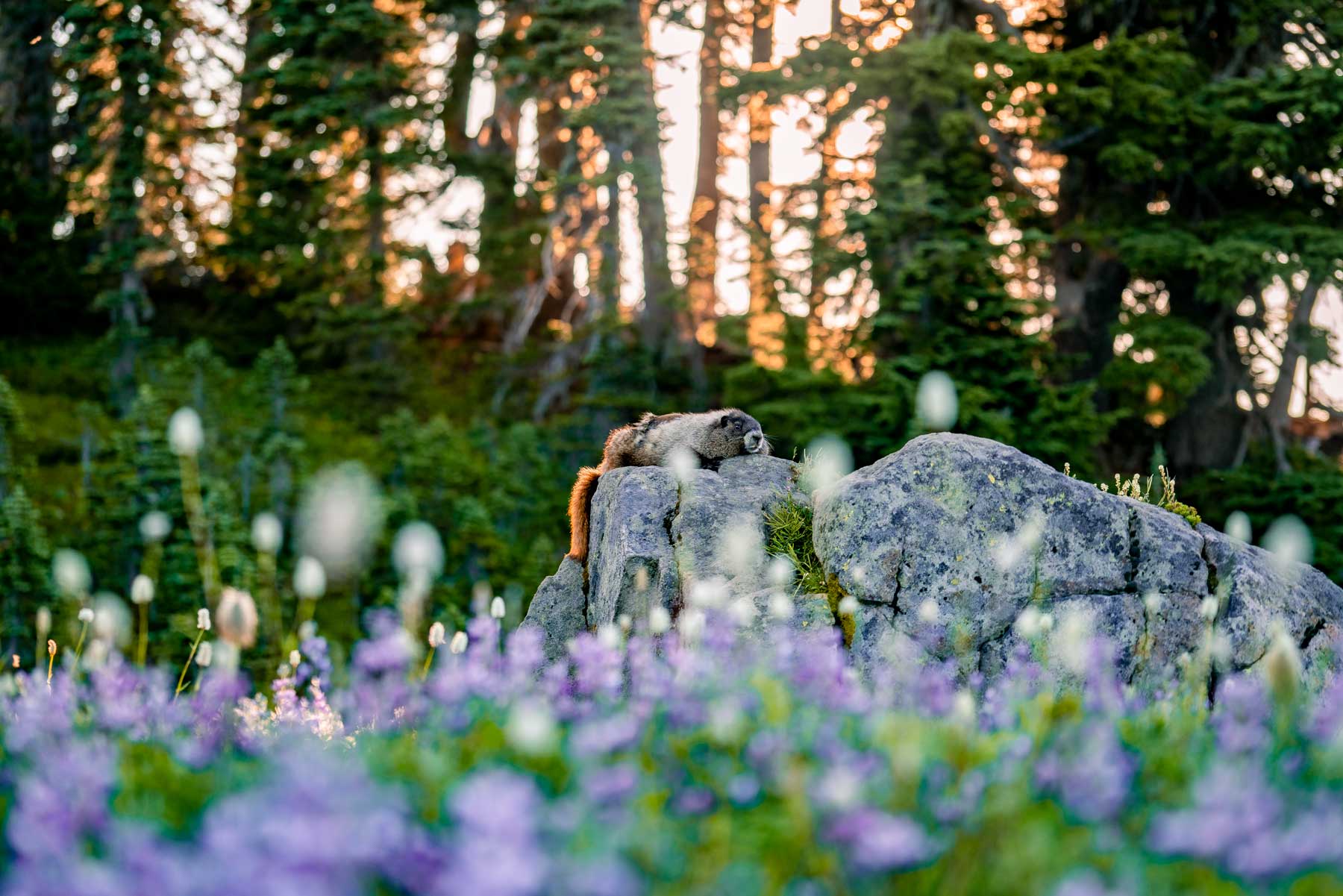
RELATED: Best National Parks to Spot Wildlife
10. Mount Rainier Has One of the Deadliest Volcanoes
Another of the amazing Mount Rainier National Park Facts has to do with volcanoes.
Believe it or not, Mount Rainier is home to one of the world’s deadliest volcanoes. Volcanic activity began between one half and one million years ago, with the most recent eruption cycle ending about 1,000 years ago.
Referred to as a stratovolcano, this means that it is a volcano composed of alternating layers of lava and ash.
As the National Park Service has reported, Mount Rainier is the most hazardous volcano in the Cascades not only in terms of its potential for eruption, but also for the risk of producing major debris flows even without an eruption.
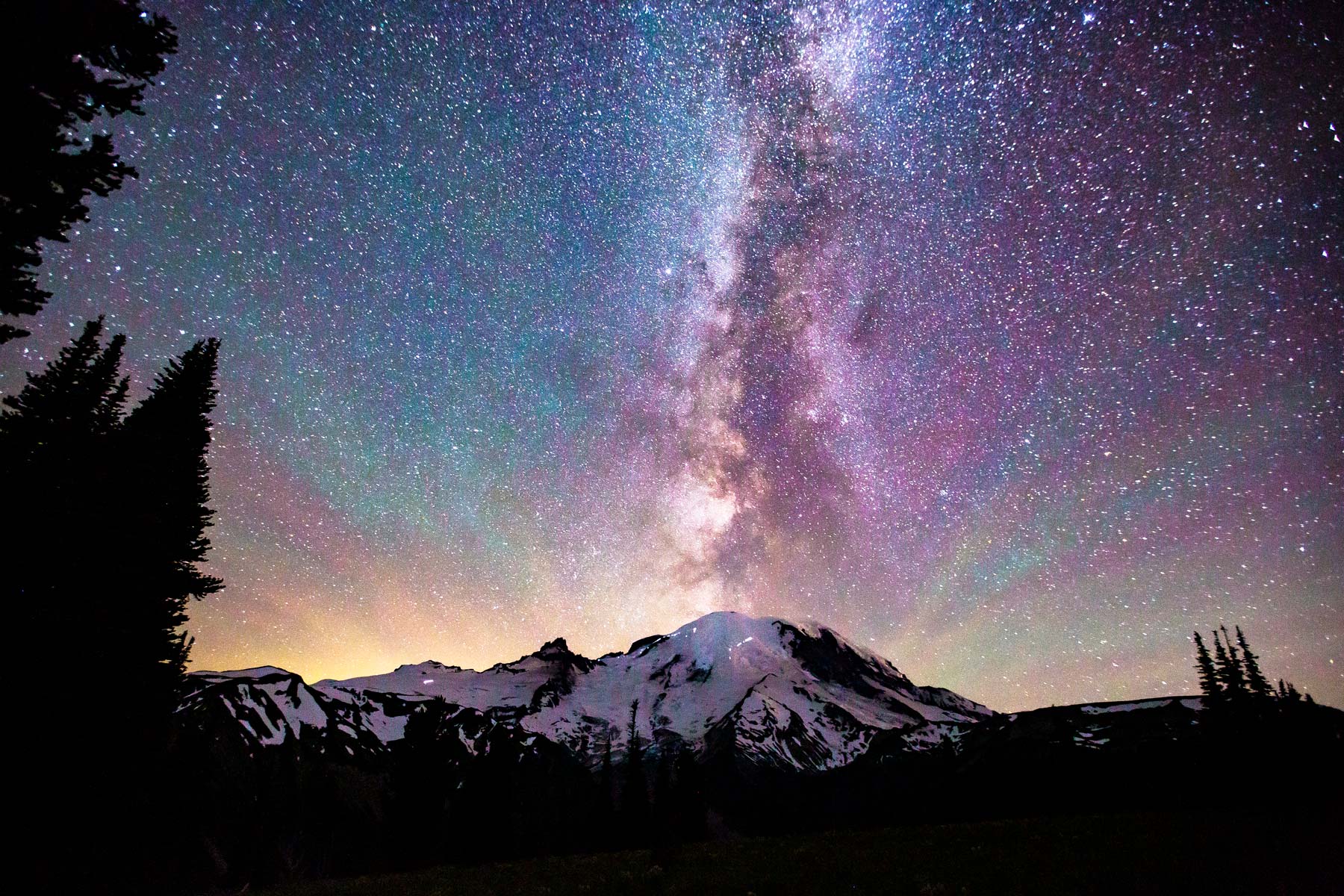
One Of Sixteen “Decade” Volcanoes
It’s hazardous potential has led it to be labeled as one of sixteen “Decade” volcanoes worldwide. This means that it is studied by the United Nations as part of its global program to reduce the worldwide severity of such potential natural disasters.
The last eruption of this volcano occurred 150 years ago. U.S. Geological Survey (USGS) research shows that Mount Rainier is one of our Nation’s most dangerous volcanoes. It’s likely to erupt again.
That having been said, the odds of it happening while you’re visiting the park are quite small. As are the odds of your winning the lottery. So don’t be afraid to plan your next trip to one of America’s most magnificent national parks.

Why Trust Us About Mount Rainier National Park?
We’re Jim Pattiz and Will Pattiz, collectively known as the Pattiz Brothers (and sometimes the Parks Brothers) and we absolutely LOVE the national parks.
You should probably know that we don’t just make this stuff up out of thin air. We’ve spent our entire adult lives exploring and filming America’s national parks and public lands.
We’ve worked with the National Park Service, the Department of Interior, USDA, and the U.S. Forest Service for years creating films on important places and issues. Our work has been featured in leading publications all over the world and even some people outside of our immediate family call us experts on the national parks.

Meet The Parks Brothers
List Of Facts About Mount Rainier National Park
- Native American tribes explored the park for centuries
- A British navy captain gave Mount Rainier its name
- Climbing Mount Rainier is can be a challenging adventure
- The Park Features Over 250 Miles Of Hiking Trails
- There are 25 Glaciers on Mount Rainier
- An air force lieutenant landed a plane on the summit
- Walt Disney honeymooned at Mount Rainier
- The park contains more than 65 species of animals
- The park has magnificent wildflowers which bloom each year
- Mount Rainier has one of the deadliest volcanoes
We Hope You’ll Follow Our Journey

Our goal here at More Than Just Parks is to share the beauty of America’s national parks and public lands through stunning short films in an effort to get Americans and the world to see the true value in land conservation.
We hope you’ll follow our journey through the parks and help us to keep them the incredible places that they are. If you’re interested in joining the adventure then please sign up below!
Helpful Related Articles
Best Hikes at Do Mount Rainier: 20 Best Hikes at Mount Rainier National Park
Visiting Paradise Mount Rainier: 15 Reasons Paradise Mt Rainier is the Most Beautiful Place in America
Mount Rainier Facts: 15 AMAZING Mount Rainier Facts (Interesting Trivia + Quick Facts)
Things to Do North Cascades: 20 Amazing Things to Do at North Cascades National Park
Best Hikes North Cascades: 15 Epic Hikes in North Cascades National Park
Things to Do Crater Lake: 20 Amazing Things to Do at Crater Lake National Park
Washington National Parks: Washington’s National Parks Ranked Best in the World
Things to Do Olympic National Park: 20 Best Things to Do at Olympic National Park
Olympic NP Guide: Comprehensive Guide to Olympic National Park
Best Hikes Olympic NP: 9 Epic Olympic National Park Hikes
National Parks Rankings: ALL 63 US National Parks Ranked By Experts
Most Visited National Parks: Top 10 Most Visited National Parks
Least Visited National Parks: Top 10 Least Visited National Parks
National Monuments Ranked: ALL 128 US National Monuments Ranked (Best to Worst)
mount rainier facts, mt rainier facts, mount rainier national park facts, mount rainier fun facts, mount rainier trivia, mount rainier facts, mt rainier facts, mount rainier national park facts, mount rainier fun facts, mount rainier trivia, mount rainier facts, mt rainier facts, mount rainier national park facts, mount rainier fun facts, mount rainier trivia,
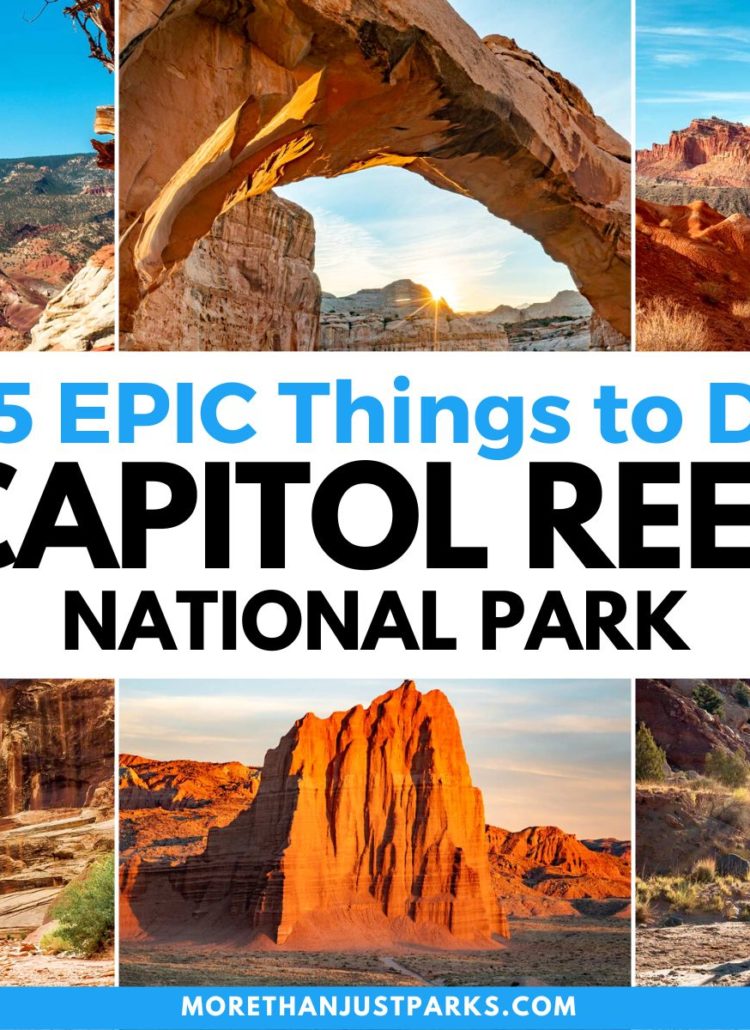
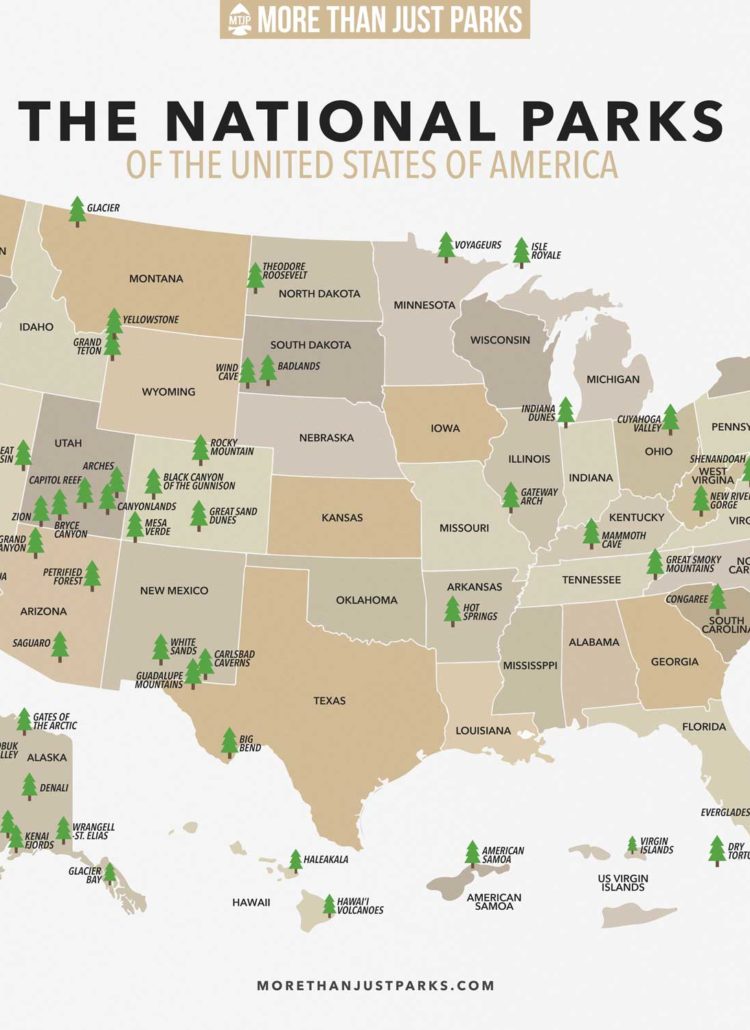
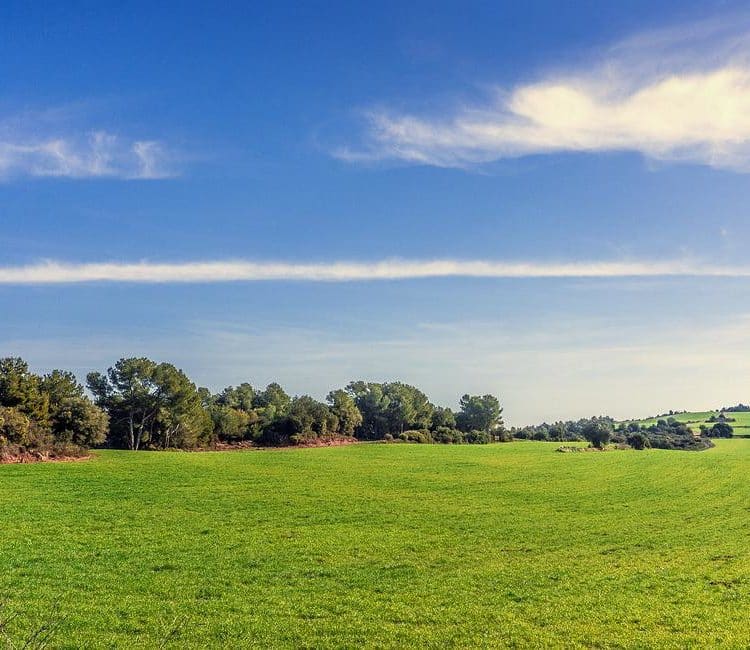


Loved the stories about incidents in the park as much as the factual information. Am planning my next getaway to Mt Rainier!